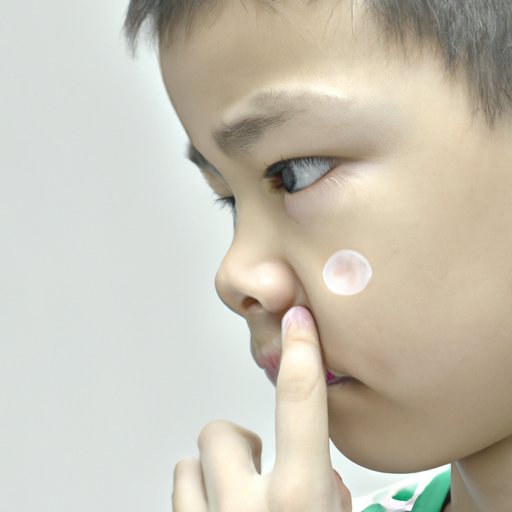
Introduction
Monkeypox is a rare but serious viral disease that occurs primarily in remote parts of Central and West Africa. The disease is caused by a virus called Monkeypox virus (MPXV), which can be transmitted to humans from animals such as rodents and primates. The symptoms of monkeypox often mimic those of other viral illnesses such as chickenpox or smallpox, making it difficult to diagnose. This article aims to explore the symptoms of monkeypox, its treatment options, and how to prevent the disease from spreading.
Unmasking Monkeypox: Understanding the Symptoms and Treatment Options
Monkeypox is a rare disease that is caused by a poxvirus and is similar to smallpox. The virus was first identified in 1958 in monkeys and humans in Africa. Monkeypox is spread to people through close contact with an infected animal, including handling bushmeat (meat from animals hunted in the wild), meat that is raw or undercooked, and through body fluids and respiratory droplets during close contact with an infected person. The symptoms of monkeypox develop within 3 to 17 days of exposure to the virus and can last up to 4 weeks or more.
Currently, there is no specific treatment for monkeypox. However, supportive care such as fluid replacement, pain relief, and management of complications such as pneumonia, may help to reduce symptoms and prevent complications. In some cases, antiviral medication may be prescribed to reduce the severity of the disease. Early detection and treatment can help prevent the spread of the virus and reduce the risk of complications.
Are You at Risk? Identifying the Symptoms of Monkeypox
People who live or work in remote areas of Central and West Africa, where monkeypox is known to occur, are at the highest risk of contracting the disease. However, travelers to these areas and people who come into close contact with infected animals or humans can also become infected.
It is important to recognize the early symptoms of monkeypox, which can often be mistaken for other viral illnesses such as chickenpox or smallpox. Early detection is crucial to prevent the spread of the virus and reduce the risk of complications.
The ABCs of Monkeypox Symptoms: What to Look For
The symptoms of monkeypox usually start with fever, headache, muscle aches, backache, swollen lymph nodes, and chills. A rash then typically develops, often beginning on the face, then spreading to the trunk and limbs. The rash evolves over several stages before forming a scab, which eventually falls off. The rash is often accompanied by other symptoms such as a cough, sore throat, abdominal pain, and vomiting. In severe cases, the disease can cause advanced symptoms, such as eye infections, which may result in full blindness.
Don’t Monkey Around with Your Health: Recognizing Early Symptoms of Monkeypox
Early symptoms of monkeypox are similar to those of other viral illnesses. Therefore, it is essential to seek medical attention if you experience any of these symptoms, mainly if you have had contact with an infected animal or person. Early treatment can slow the progression of the disease and prevent complications, making it easier for the patient to recover from the virus quickly.
If you live in or have traveled to an area where monkeypox is known to occur, it is important to take precautions to protect yourself. Avoid contact with sick people or animals, wash your hands frequently, and avoid bushmeat, raw or undercooked meat, and other animal products.
From Rash to Fever: Mapping Out the Symptoms of Monkeypox
The progression of monkeypox symptoms can vary depending on the severity of the disease in each individual. After exposure to the virus, fever, headache, muscle aches, and a sore throat can begin to develop, followed by the appearance of the first rash stage. The rash usually starts on the face and then spreads to the trunk and limbs, sometimes including the palms and soles of the feet. The rash often progresses through several stages before forming a scab and falling off.
It can be challenging to identify the early stage of monkeypox as the symptoms can be mistaken for other viral illnesses such as chickenpox or smallpox. However, seeking immediate medical attention can prevent the spread of the virus and reduce the risk of complications.
Conclusion
Monkeypox is a serious viral disease that can be challenging to identify, given its similarities with other viral illnesses. However, early identification and treatment can help prevent the spread of the virus and reduce complications for individuals. It is essential to seek medical attention if you develop any of the symptoms of monkeypox, particularly if you have had contact with an infected animal or person. By taking adequate precautions, including avoiding raw or undercooked meat, bushmeat, and other animal products, we can control the spread of the virus and protect ourselves and our loved ones.




